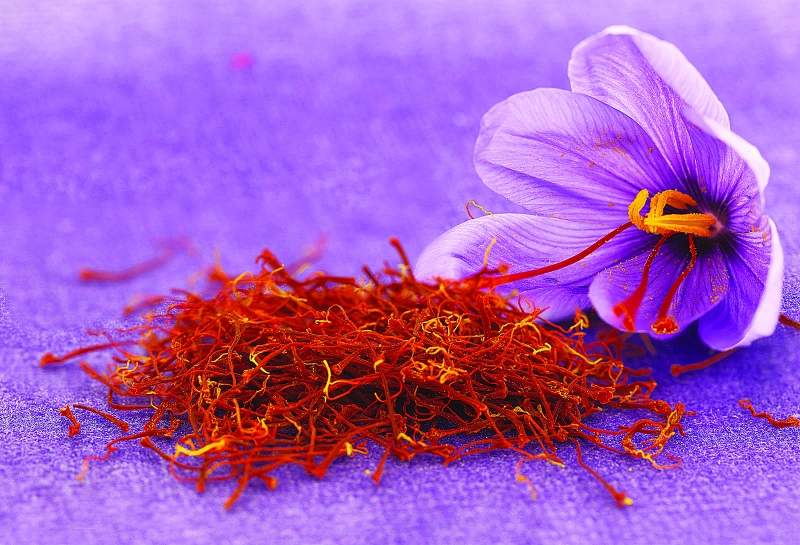Cleopatra used it to infuse her bathwater, while Alexander the Great bathed his battle wounds with it and drank saffron tea.
Saffron, the gold of Greek land as it is called, is one of the most precious spices of ancient cultures because of its aroma, colour, pharmaceutical and aphrodisiac properties.
Locals plant saffron every summer and when autumn comes, they remove the stigmas of the flower by hand and dry them thoroughly to make crimson slim threads. It takes about 50,000 stigmas to obtain 100grams of red saffron.
Annual production depends upon weather conditions and ranges from 6 to 12 tons of pure red saffron per year. It is exported to all European Union’s countries, Japan, Switzerland, USA, United Arab countries, Australia and elsewhere and can cost up to 2,000 euros per kilo.
Saffron is rising even more in popularity since new research concludes that the saffron stigmas possess strong antioxidant properties that can neutralise free radicals and can also improve brain function and memory.
As the flowers begin to blossom in mid-October, they are typically hand-gathered by women, who place them in their gowns or baskets and then take them home in panniers. The work requires a delicate hand and usually goes on from dawn to dusk for a month. The flowers are collected at dawn when their petals are still closed so that their organoleptic properties aren’t affected by exposure to atmospheric agents.
In the next step, the red stigmas, typically in groups of three, are separated from the flowers. They are set out to dry on the same day at a temperature of around 35 degrees Celcius, before the red pistils are separated from the yellow ones, thereby eliminating pollens and foreign elements.
This step must also be carried out by hand and takes between 20 to 60 days. Finally, the pistils are weighed and packaged to verify that the product conforms to the quality management’s strict standards.
Producers that don’t respect the parameters are immediately eliminated in order to guarantee the product’s quality. The “red gold” then arrives in countless homes as a spice, used for everything from pastries and cheese-making to pasta and liquor.
It has also become a popular medicinal remedy, thanks to its digestive and anti-inflammatory properties and used in many hair and beauty products.

